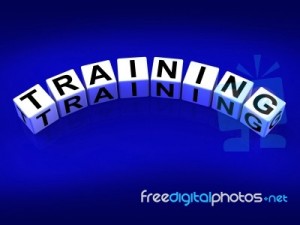Part 1: Don’t let graded observations get you down!
‘’Why do managers in education fall back on graded observations as their main default management tool?’’
‘‘Are there better approaches to supporting frontline teachers?’’
‘’Can a manager nurture and develop a teacher’s classroom resilience skills, or does it have to come from hard-earned experience?’’
These questions are different ways of looking at the same root challenge: can managers in education and academia truly inspire teachers? Or does the traditional ‘command and control’ approach get results?
From the supervision of staff through to the problematic aspects of classroom management, both teachers and middle managers in education are often left to develop coping skills as they go.
Who develops you?
In the teaching world we have become more and more focused on a learner-centred approach, and while this is no bad thing, I sense that we are often left with a gap: we develop our method through numerous INSETS, but do we develop ourselves as teachers? Terms such as ‘good teacher’ or ‘outstanding teacher’ have been hi-jacked (certainly in the UK) by regulation and inspectors. And the whole debate appears to have shifted into measuring the process over the impact.
If you’ve ever stayed up late writing long lesson plans for an observation that you feel is simply a process-driven exercise, then you might well agree.
Taking the lead: 3 approaches
In this series of posts I look outside the sector for ideas and inspiration. If you’re currently struggling – either in the staffroom or the classroom – then, first of all, it is good to know you are not alone. In a survey of just under 4,000 adult education tutors three quarters disagreed that graded observations had helped them to improve as classroom practioners’[1]. Matt O’Leary[2], Educational Researcher and Principal Lecturer at the University of Wolverhampton, says there is an increasing consensus among those working in further education (post-16) ‘that graded lessons are no longer fit for purpose’[3].
In this first post I look at how not to let graded observations de-motivate you, especially if you are looking for genuine solutions or practical ways to improve.
In posts 2 and 3, I look at completely different approaches to developing yourself: systems thinking, positive enquiry and solution focused approach in leadership, tried and tested by business leaders. Can we adapt these models for teachers, in their role as ‘leaders’ of their classroom?
Developing ourselves
I want to propose ideas that don’t necessarily originate from educational research but from business management theories. They have proved invaluable in my own personal survival guide to teaching and stem from my pre-teaching management career.
The weakness of the current observation approach in improving teachers as leaders
One of the most surprising things about my career change into teaching was the lack of investment in me as a teacher, in effect as ‘leader of my classroom’. Where corporate managers and leaders can often go on expensive training, in-house coaching or mentoring throughout their career, teachers seem to learn this critical aspect ad hoc. Even worse, someone then comes and ‘’observes’’ you as the leader of your classroom. Somewhere along the way, observations have become the main management tool. If time was prioritised for supervision, one-to-ones, mentoring and peer observations, I am convinced that teachers, especially those new to the profession, would flourish far more than they would under current practices.
Measuring quality
Of course, all teachers need to be observed. We need to know that bad things aren’t happening in the classroom. But I’m convinced that observations should be just one method of many that we use to develop teachers. Matt O’Leary, author of ‘Classroom Observations’ (Routledge, 2014), has come up with a range of more sophisticated approaches to assessing teaching[4].
Why the current observation culture is not a replacement for real management and coaching
Process V impact
Observation culture has become the default practice, replacing real management and mentoring
- Have you ever had an observation that left you feeling unclear, despondent or demotivated?
- Have you ever had an observation where the final piece of work produced by your students in follow up lessons was requested by an observer?
You may be surprised to know that feeling demotivated after an observation is not ‘your fault’. Something has gone wrong with the feedback process. Even where real improvement is required, the feedback process should leave you feeling ready to take steps to change, or should inspire to try something new. It certainly should not leave you with sleepless nights.
But I know that observation stress is a common feeling among teachers. It has led me to question two things:
- Are observers trained to genuinely look for impact? Many seem trained only to look for process. I know observers look at student work during the observation. But to my mind, that’s really just a snapshot of impact. What about student work produced subsequently, maybe as homework or in the follow up lessons, when the cognitive learning has really embedded itself? Now that really would be impact over process.
- What can be done to improve observation feedback? In many non-teaching professions, learning how to give inspiring or difficult feedback is something that is core to any management training. Even when giving bad messages, management feedback training focuses on leaving the recipient positive and clear about the next steps. My management training embedded in me the rule that no serious feedback must come as a total surprise to a recipient. I reeled when I got my first observation feedback as a newly qualified teacher in FE. I hadn’t realised that the deficit model was still alive and well!
The lost potential of the observation culture
Of course, it’s probably because academic managers/teacher trainers in turn often don’t know how to really enable staff development (back to a management style that values process over impact again). It’s such a missed opportunity to create trust or to inspire change. On a personal note, the most beneficial observations I have had are from managers who came in to the classroom to support me; to be an ‘extra pair of eyes’ and help me figure out a particular problem. I learnt so much from their years of experience.
I’m convinced that process over impact predominantly creates a tick-box approach. In response, the teacher creates excessively long lesson plans to meet the criteria of those boxes. And that chance to truly learn or benefit from a senior practioner is lost. Jim Scrivener, author of ‘Learning Teaching’[5], believes that ‘the act of teaching is essentially a constant processing of options. At every point in each lesson, a teacher has a number of options available; he or she can decide to do something, or to do something else, or not to do anything at all.’ Lesson plans are important but they are a guide. If a short-planned activity turns into a learning point that the students want to expand, should we go with it if we are being observed?
Side-stepping the victim teacher trap
There is so much excellent leadership training and strategies out there – all being used in other sectors. In my follow up posts, I look at how you can stop feeling like a victim teacher or a victim manager, and instead teach yourself these leadership techniques.
The teacher as a leader
Because, what is a teacher, if not a leader of the classroom? We direct, we plan, we prepare the strategy of each lesson and the wider scheme of work. We aim to motivate, to improve results, deal with performance problems……..perhaps even inspire. You don’t need to be an NLP expert to see how much the language of leadership overlaps with the language of teaching.
Borrowing ideas from outside the sector
This series of posts looks at why personal development and supportive management skills are currently under-valued in education.
Does a solution lie outside the teaching world? I believe it does.
40% of new teachers are leaving within 5 years
Last year, OFSTED (the UK education regulator) released statistics showing that 40% of new teachers in the UK are leaving the profession within five years of training[6].
Ofsted Chief Michael Wilmshaw rightly calls this a ‘national scandal’ and says new recruits ‘are left to flounder without support from more senior staff’. He lists the reasons why the numbers are so high: poor teacher training, inadequate support once in the classroom, a lack of on-going mentoring from leaders within the school and an ‘infantilising’ of the profession, where teachers are encouraged to think like ‘victims’.
We could go round and round looking for the causes: government targets create downward pressure on regulators, Ofsted create a command and control approach………That in turn creates the backdrop to graded lessons being adopted by colleges and schools as a draconian tool. But the result is that it has left the teaching world far behind other professions when it comes to genuine coaching and nurturing of new entrants into the profession.
While some teachers in the world of private education may not have quite the same rigorous approach to being performance managed, there can still be a sense that a wider knowledge and implementation of educational coaching and management could pay real dividends (two years of my own teaching experience has been in private education).
Are we long overdue a change?
I would very much appreciate hearing from any teacher, student or educational manager who would like to respond, particularly teachers and lecturers who have experienced a positive type of assessment, professional coaching and collaboration.
In the next posts I want to share tips on how business leadership training can be applied in the classroom and to your own development. I’ve tried them myself. I’m going to look at three recognised theories: systems thinking, positive enquiry and solution focused leadership.
[1] http://www.niace.org.uk/sites/default/files/documents/adults-learning/2014-spring/AL-Spring-2014-Vol25-pg38-41.pdf
[2] Author of ‘Classroom Observations’, Routledge, 2014
[3] http://www.niace.org.uk/sites/default/files/documents/adults-learning/2014-spring/AL-Spring-2014-Vol25-pg38-41.pdf
[4] Author of ‘Classroom Observation’, Routledge 2014
[5] Macmillan Books for Teachers
[6] http://www.theguardian.com/education/2014/jan/15/ofsted-chief-teachers-quitting-scandal











